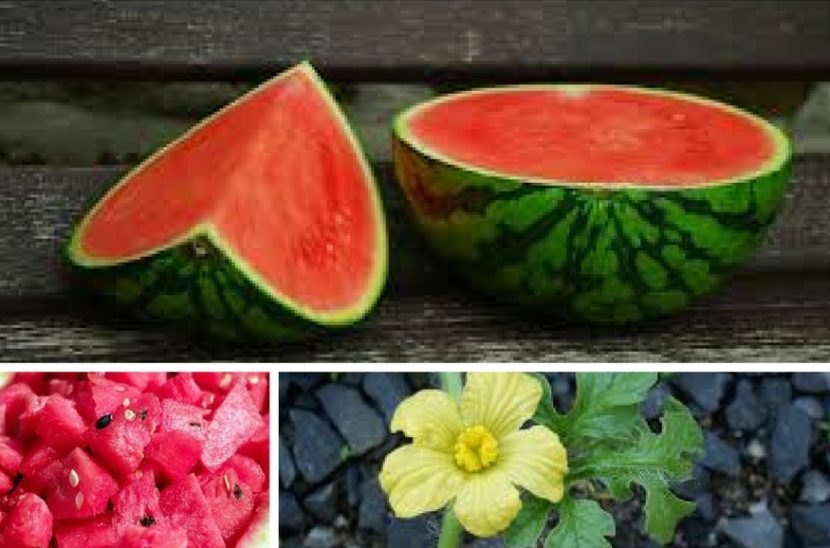Citrullus lanatus
Cultivation
Cultivate from seedlings and give them time to ripen. To get strong roots, first fill the cups for seedlings with soil up to ¾, and refill later. Plant the seedlings out when the weather is very warm. If it gets colder, put straw around the plants.
Distance between plants
At least 1 m (3 ft) between rows and at least 0.5 m (1.5 ft) between the plants in a row.
Location
Sunny.
Amount
One plant per person.
Time of planting
The second week in April for seedlings. The seeds germinate in 8 to 14 days.
Fertilization
Fertilize well with home compost or plant on the compost. Use algae brew and solutions from garlic, onion, chamomile or sage.
Watering
They need regular watering. Don’t water on leaves.
Watermelon’s good neighbors
Sweet corn, potato, broad beans, black radish, beans, peas, beetroot, basil, Indian cress, sunflowers.
Watermelon’s bad neighbors
Squash, zucchini.
Diseases and pests
If the soil keeps excess water, soil fungi appear and the plant dies away. Do not plant watermelons, melons, cucumbers or squash in the same place for at least four years.
Watermelon’s storage
The fruits are ripe when the tendril is completely dry and the watermelon can be easily torn from the plants. Store in a cool place for short time, as they lose their taste quickly.
Food
Watermelon is very beneficial to the body and refreshing in summer, as it contains a lot of water, vitamins B and C and mineral substances.
Important
Plant in the sunniest part of the garden, as it needs a lot of sunshine and warmth.
Miscellaneous
Watermelon is considered a fruit as well as a vegetable. In warm climates it grows when planted directly outside; in other climate it is better to cultivate seedlings or grow in a greenhouse.

